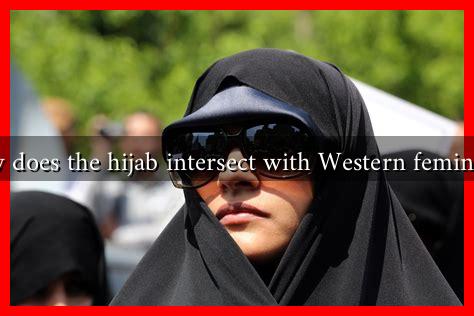-
Table of Contents
How Does the Hijab Intersect with Western Feminism?
The hijab, a traditional headscarf worn by many Muslim women, has become a focal point in discussions about identity, autonomy, and feminism. In the context of Western feminism, the hijab presents a complex intersection of cultural expression, personal choice, and societal perception. This article explores how the hijab is viewed within Western feminist discourse, the implications of these views, and the experiences of women who choose to wear it.
The Hijab: A Symbol of Identity and Empowerment
For many Muslim women, the hijab is not merely a piece of clothing; it is a profound symbol of their faith and identity. The decision to wear the hijab can be deeply personal and empowering. Here are some reasons why women choose to wear the hijab:
- Religious Obligation: For many, wearing the hijab is a religious duty that signifies their commitment to Islam.
- Personal Empowerment: Some women view the hijab as a means of reclaiming their bodies and asserting their autonomy in a society that often objectifies women.
- Cultural Identity: The hijab can serve as a connection to cultural heritage and community, fostering a sense of belonging.
These motivations challenge the stereotype that the hijab is solely a symbol of oppression, highlighting the diverse experiences of women who wear it.
Western Feminism: A Diverse Landscape
Western feminism is not a monolithic movement; it encompasses a range of ideologies and perspectives. However, it has often been critiqued for its tendency to prioritize Western values and experiences, sometimes marginalizing the voices of women from different cultural backgrounds. This has led to a complex relationship between Western feminism and the hijab.
Critiques of Western Feminism
Some critiques of Western feminism regarding the hijab include:
- White Feminism: The term “white feminism” refers to a form of feminism that centers the experiences of white, middle-class women while ignoring the struggles of women of color and those from different cultural backgrounds.
- Patronizing Attitudes: Some Western feminists may view the hijab as inherently oppressive, failing to recognize the agency of women who choose to wear it.
- Colonial Legacy: The historical context of colonialism has influenced perceptions of Muslim women, often framing them as victims in need of saving.
These critiques highlight the need for a more inclusive and intersectional approach to feminism that respects and amplifies diverse voices.
Case Studies: The Hijab in Western Contexts
Several case studies illustrate the intersection of the hijab and Western feminism:
- The Hijab Ban in France: In 2004, France implemented a law banning religious symbols in public schools, which disproportionately affected Muslim girls. This sparked debates about secularism, freedom of expression, and the rights of women to choose their attire.
- Social Media Movements: Campaigns like #HijabDay and #FreeHijab have emerged on platforms like Twitter and Instagram, allowing women to share their experiences and challenge stereotypes associated with the hijab.
- Fashion and Representation: The rise of Muslim fashion influencers has contributed to a more nuanced understanding of the hijab, showcasing it as a fashionable choice rather than a symbol of oppression.
Statistics and Public Perception
Public perception of the hijab varies significantly across Western societies. According to a 2017 Pew Research Center survey, attitudes towards Muslims and the hijab are often influenced by media representation and political discourse. Key findings include:
- Approximately 48% of Americans believe that Islam is incompatible with American values.
- Muslim women who wear the hijab report experiencing higher levels of discrimination and harassment compared to those who do not.
These statistics underscore the importance of fostering understanding and dialogue around the hijab and its significance to Muslim women.
Conclusion: Towards an Inclusive Feminism
The intersection of the hijab and Western feminism reveals a complex landscape of identity, autonomy, and cultural expression. While the hijab can be a symbol of empowerment for many women, it is often misunderstood and misrepresented within Western feminist discourse. To move towards a more inclusive feminism, it is essential to listen to and amplify the voices of women who wear the hijab, recognizing their agency and the diverse reasons behind their choices.
Ultimately, embracing intersectionality in feminism can lead to a richer understanding of women’s experiences across cultures, fostering solidarity and support among all women, regardless of their attire.
For further reading on this topic, you can explore resources from organizations like Muslim Women’s Network UK and Pew Research Center.

